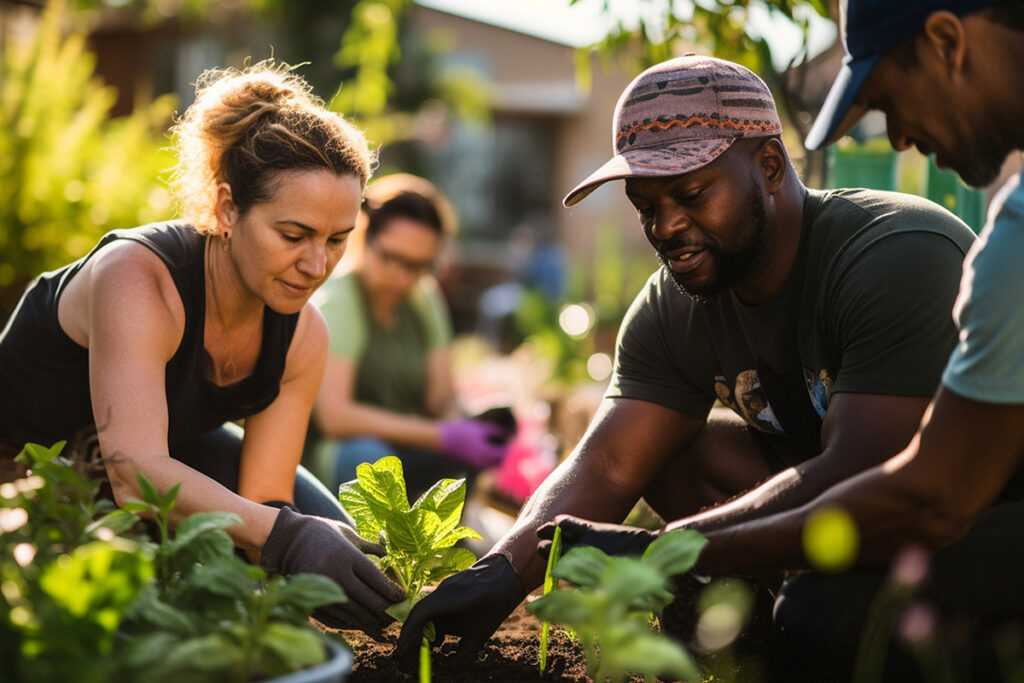Placemaking, the art and science of designing and enhancing public spaces, has gained recognition among economic developers as an integral component of successful communities. At its core, placemaking is about creating vibrant, accessible, and inclusive spaces where people can gather, connect, and thrive. Placemaking also creates an opportunity to bridge gaps across racial and socioeconomic lines, expand access to economic opportunity, and foster a sense of social inclusion. These outcomes, however, require intentional efforts to correct for unintentional practices that lead to division, creating unequal access to amenities, public spaces, and economic opportunity. Designing inclusive places and spaces also requires a commitment to address the reverberations from historically exclusive practices such as redlining, segregation, and disinvestment in communities of color.
Understanding Inclusive and Equitable Placemaking
Inclusive placemaking considers the fair distribution of resources, opportunities, and benefits within communities. It emphasizes ensuring that everyone, regardless of their background, income, race, or ability, has equal access to and can participate in the development and enjoyment of public spaces. An inclusive approach also allows for acknowledging and addressing historical injustices, systemic disparities, and the diverse needs of different populations within a community.
“Successful placemaking is about outcomes and impacts. Ultimately, who feels welcome, and who feels excluded by placemaking? What message does the design of a space send, and what values are reflected?“
— Jenn Todd-Goynes, Senior Consultant, TIP Strategies
Why Equity and Inclusion Matters
Approaching placemaking through the lens of inclusion is not just a matter of social justice. The following are a few ways an inclusive approach can help foster healthy, resilient, and prosperous communities.
- It expands economic opportunity by making sure vibrant public spaces are accessible to a wide range of users. Placemaking can stimulate economic development through broader support of local businesses and create job opportunities within underserved neighborhoods.
- It supports social inclusion and cohesion by intentionally making spaces more welcoming to all members of the community which helps to retain residents. For example, celebrating and preserving the cultural identity and heritage of diverse communities fosters pride and a sense of connection to place.
- It promotes health and well-being by offering equitable access to green spaces, recreational areas, and amenities. Access to these assets promotes physical activity, mental well-being, and overall quality of life, all of which have been linked to job performance. It can also reduce health disparities and enhance community resilience to environmental stressors.
- It addresses environmental injustice by prioritizing environmental sustainability and resilience and by addressing injustices that leave marginalized communities disproportionately affected by environmental hazards.
Practical Tips for Equitable Placemaking
As demonstrated, intentionality is critical to achieving equitable and inclusive outcomes. The following are some strategies for approaching placemaking with intent.
- Prioritize “whole” community participation by engaging a variety of stakeholders throughout the planning and decision-making stages, particularly individuals from organizations that advocate for underrepresented populations. Emphasize authentic involvement—by actively listening and encouraging candid feedback—to grasp and tackle the unique needs and visions of various communities. This step may also require removing or reducing, physical, financial, or other barriers to participation.
- Adopt a culturally sensitive approach that respects, incorporates, and celebrates the cultural values, traditions, and preferences of diverse communities. Gentrification and displacement can be minimized by preserving and enhancing existing cultural assets, beloved community spaces, and affordable housing options.
- Evaluate physical access to help guarantee that public areas are readily available to everyone, including individuals with diverse abilities, older adults, and those with mobility challenges. Take into account elements such as proximity, transportation options, and the elimination of physical obstacles.
- Adjust and assess how resources are, and have been, allocated across neighborhoods prioritizing underserved areas with limited access to quality public spaces and amenities. Invest in infrastructure improvements, green spaces, and community facilities in historically marginalized communities.
- Use data-driven approaches to assess the impact of initiatives on different population groups. Segment data to monitor outcomes, collect feedback, and adjust strategies to address emerging needs and disparities over time.
- Work with local governments, businesses, and educational/anchor institutions to pool resources, knowledge, and funding opportunities. Alliances and collaborative efforts are more effective at championing policies that advance equity and social fairness.
Embracing equity as a guiding principle in the placemaking process ensures that public spaces reflect the diverse needs, values, and aspirations of the whole community. If “placemaking is not the end product, but a means to an end,”[1] then an inclusive process is the only way to achieve an equitable end, where everyone feels valued, connected, and empowered to shape their shared future.
[1] Project for Public Spaces, “Equitable Placemaking: Not the End, but the Means,” June 19, 2015



